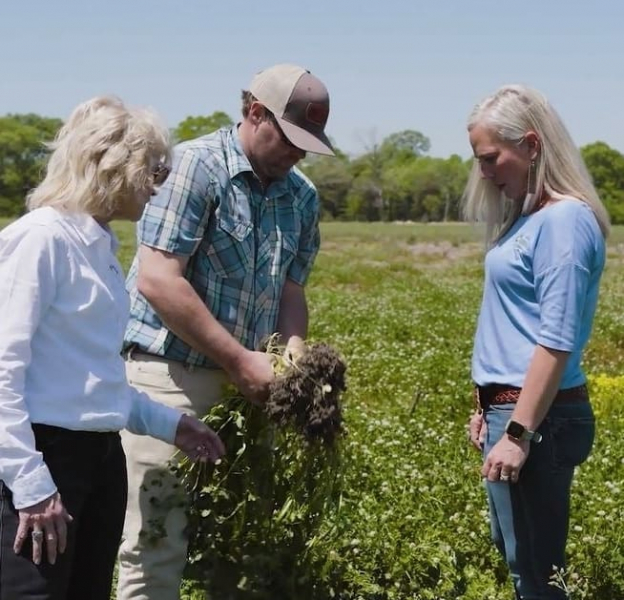Financing Resilient Agriculture
Farm Credit supports the ingenuity and dedication of our customers as they explore ways to operate sustainably.

Financing conservation, sustainability and resilient ag practices
America’s producers are the land’s original stewards and continue to lead the way in implementing climate-smart agriculture practices. From planting cover crops and crop rotation to conservation tillage and other regenerative practices, these practices benefit producers, the land they operate, their local communities and make agriculture more resilient.
For generations, Farm Credit has financed agricultural producers’ efforts to advance conservation, sustainability and resilient ag practices. As a cooperative financial institution, owned and governed by our customers, we are committed to continuing that long-standing effort in partnership with our member-owners. Farm Credit supports federal climate policies that are voluntary, market- and incentive-based, advance science-based outcomes, promote resilience and help rural economies better adapt to climate change.
We support the ingenuity and dedication of our customers as they explore ways to operate sustainably. From improving soil vitality or reducing irrigation and other inputs to increasing organic production and implementing renewable energy sources, American producers lead the way in preserving the nation’s natural resources while continuing to produce a safe and abundant food, fuel and fiber supply.
Dee River Ranch
For Dee River Ranch, an Alabama Ag Credit customer, sustainability is the key to success. By implementing no-till and cover crop methods early on, Dee River Ranch has improved soil health and mitigated erosion from wind and rain.
Sand County Foundation
For more than 50 years, Sand County Foundation (SCF) has addressed pressing environmental issues by advancing voluntary conservation on working lands through ethics, science and incentives. The Foundation shapes its work in the spirit of Aldo Leopold’s land ethic, a personal responsibility to care for natural resources. Mentors involved in the Land Ethic Mentorship program come from SCF’s growing national network of farmers and ranchers who have received the Leopold Conservation Award.
The award program recognizes agricultural land managers for achievement in conservation. Mentors support their mentees as they adopt conservation and agricultural practices to balance farm productivity, ecosystem health and community well-being. As a supporter of the Sand County’s National Conservation Symposium and Land Ethic Mentorship Program, Farm Credit helps farmers learn stewardship practices and expand their support networks with peers.
Isbell Farms
For decades, the Isbell family has adopted practices that led to greater efficiency and sustainability in rice production. The Isbell family has been AgHeritage Farm Credit Services customers since 2004.